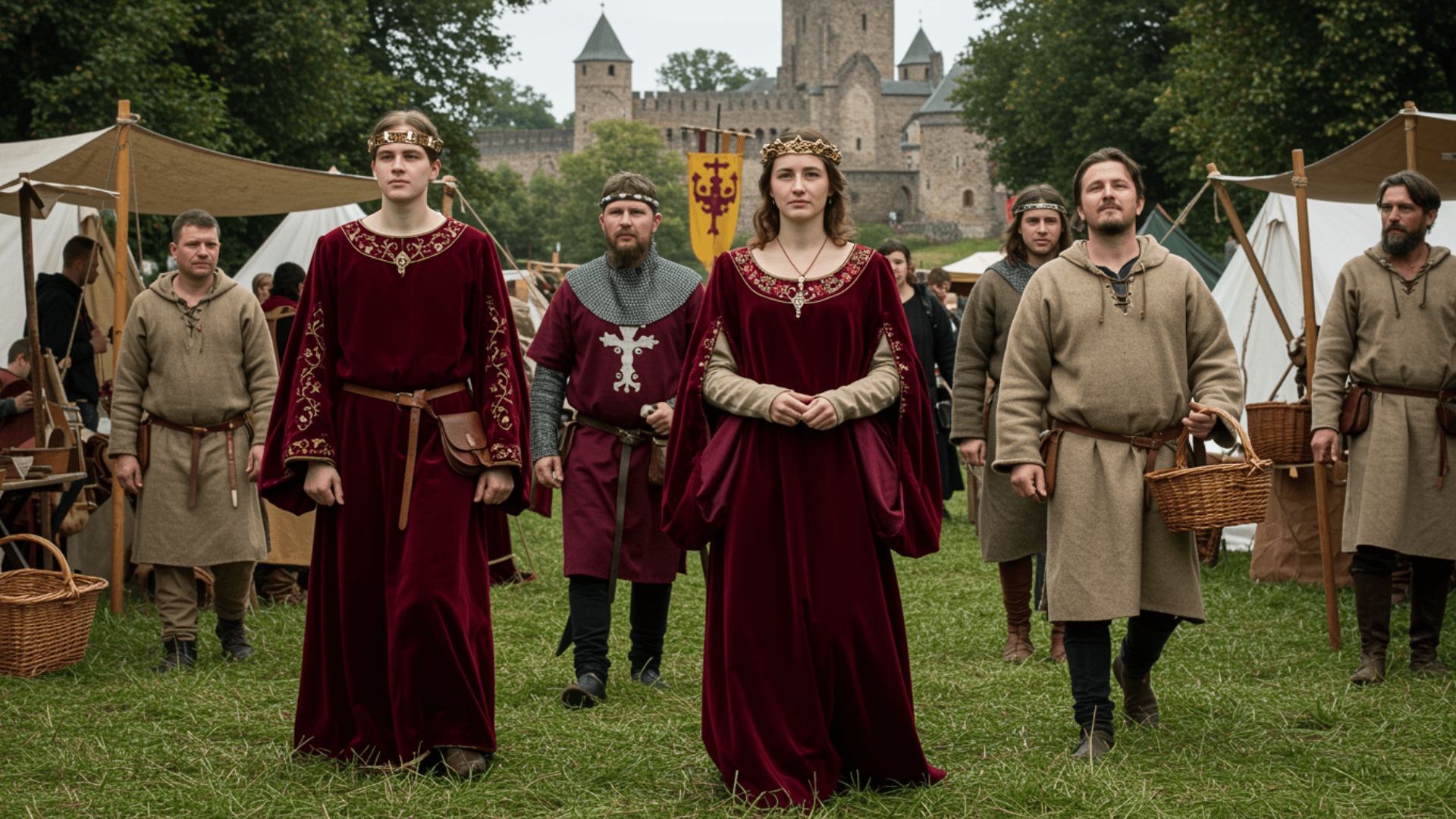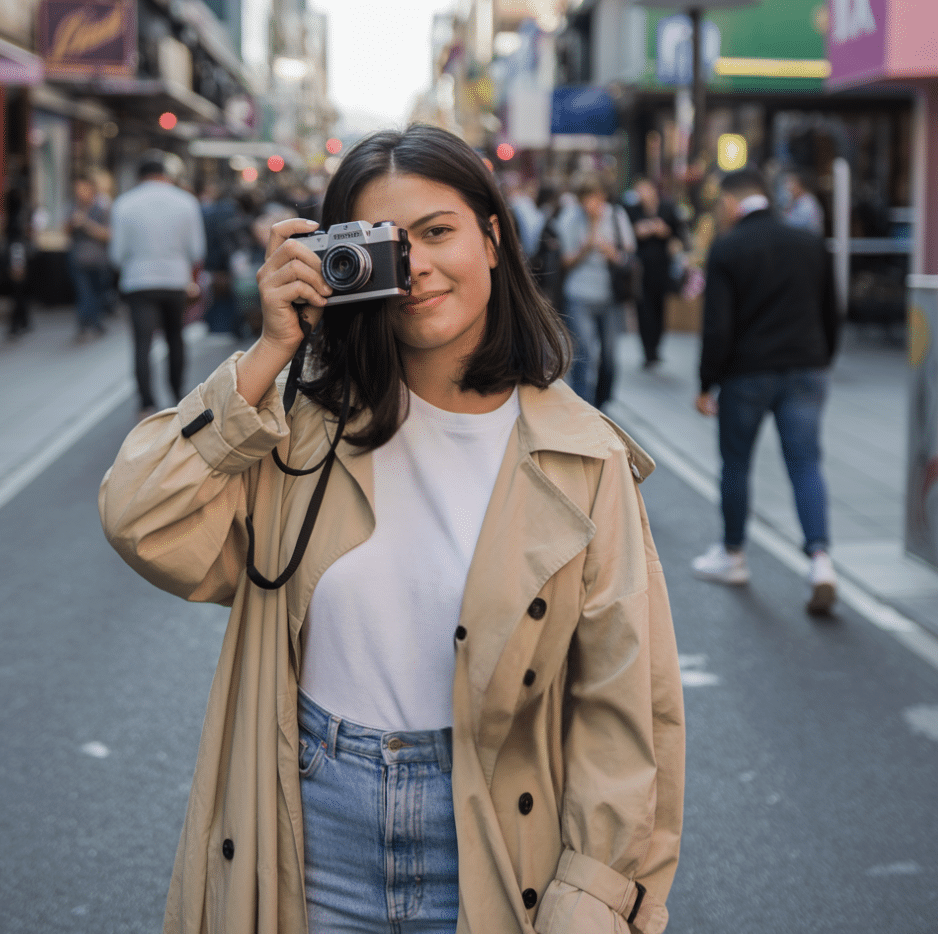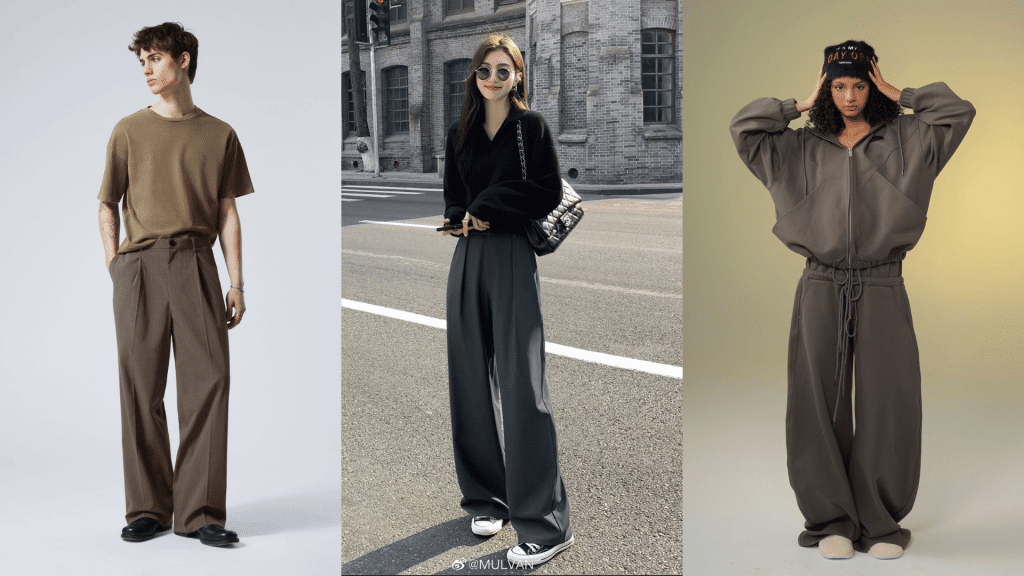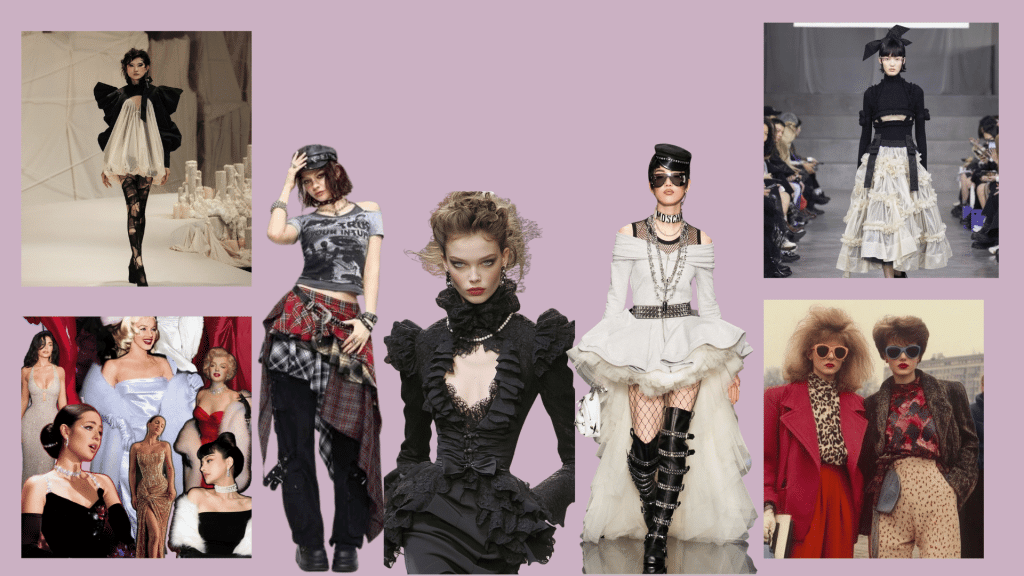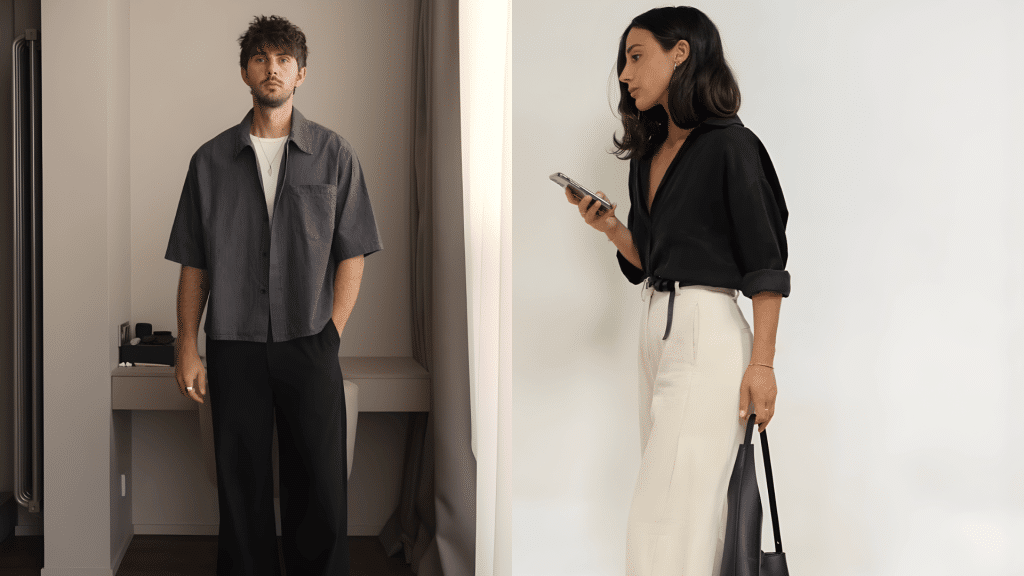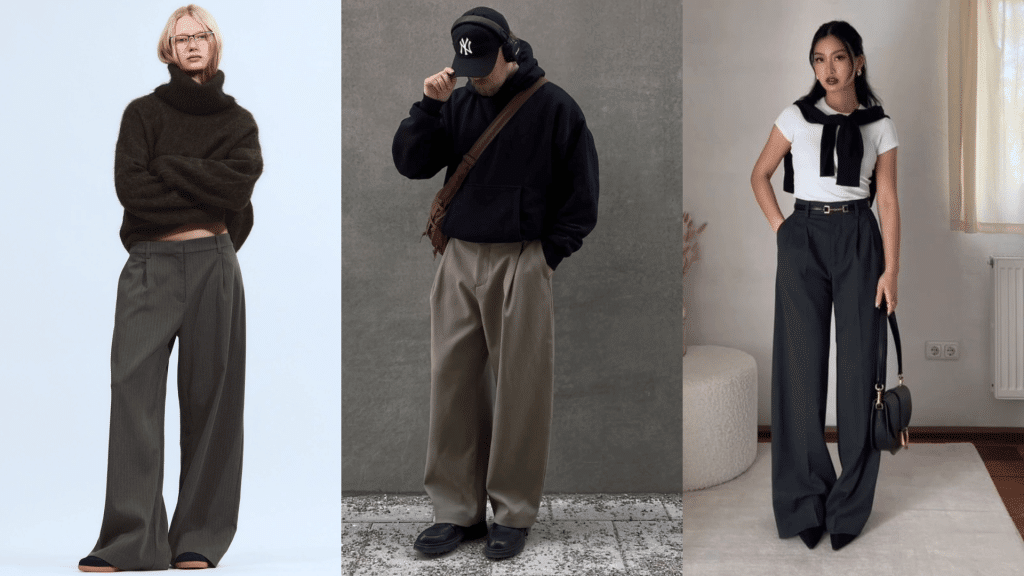Ever wondered how medieval people used clothing to announce “I’m royalty!” or “I work in the fields!” without saying a word?
Medieval fashion was the ultimate status symbol system. For cosplayers and historical enthusiasts, understanding the differences between medieval noble clothing and medieval peasant clothing opens up incredible costume possibilities.
This guide reveals close to real medieval fashion secrets, from the luxurious wardrobes of nobles to the humble outfits of peasants, along with modern shopping tips for your next Renaissance fair or cosplay event.
The Evolution of Medieval Fashion
Medieval fashion evolved over ten centuries from survival gear to ornate status symbols, reflecting humanity’s refinement and cultural exchanges shaping European society.
- Early medieval clothing (5th-10th century): It prioritized function over form, with simple tunics and practical garments designed for harsh living conditions.
- The High Medieval period (11th-13th century): It introduced superior tailoring techniques and lively new dyes from expanding trade routes.
- Late Medieval fashion (14th-15th century): It grew into elaborate displays of wealth, marked by Gothic influences and incredibly detailed craftsmanship.
This progress from necessity to artistry shows how fashion became humanity’s most visible expression of adaptation, power, and cultural identity throughout the medieval era.
Power in Medieval Noble Clothing
Medieval noble fashion was a visual declaration of wealth and power, where every element carried symbolic weight. Below are outfit examples and essential elements that defined noble attire.
1. The Royal Lady
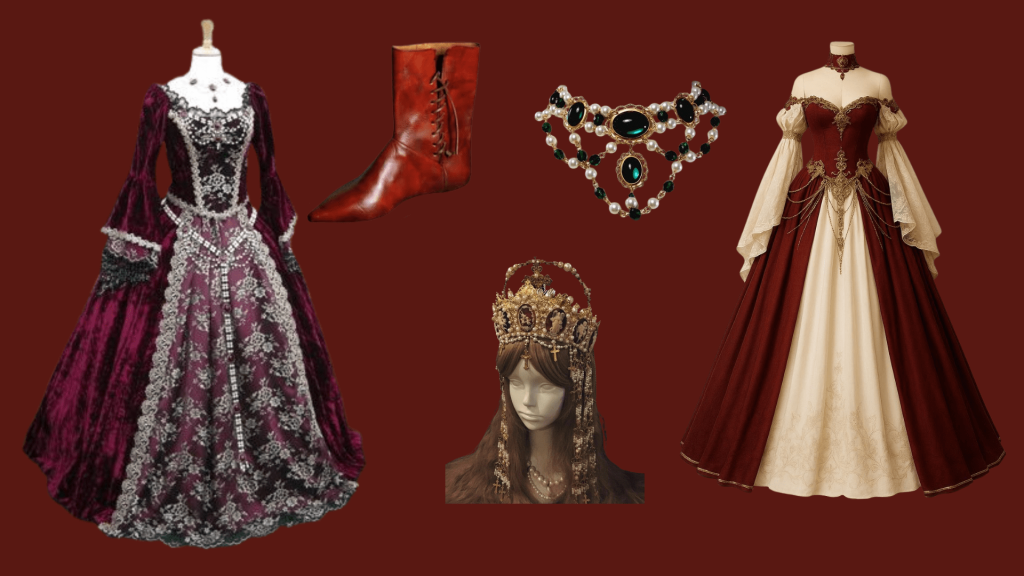
Dressed in a beautiful red velvet gown with sparkling gold trim, she looks absolutely stunning and full of grace. Her tall, pointed hat, adorned with a flowing veil, jeweled headband, and pointed shoes, completes her charming look.
The cozy, fur-lined cloak and shimmering gold accents combine to create a luxurious ensemble that makes her shine like genuine medieval royalty. Every detail creates a perfect medieval royal appearance.
2. The Knightly Nobleman
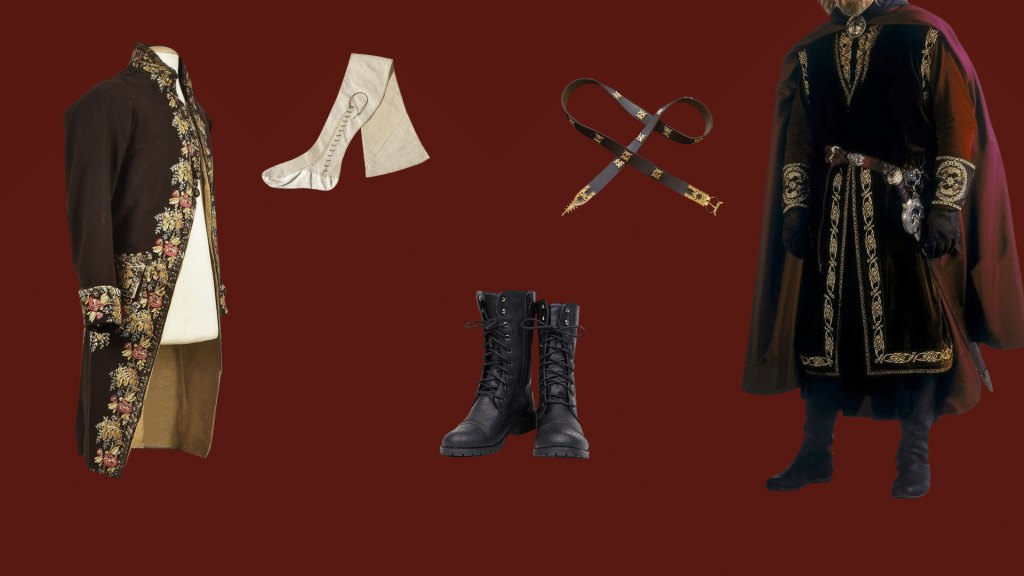
This nobleman displays strength and grace in his heraldic tunic, beautifully embroidered and dyed in his family’s colors.
His silk hose and crest-adorned surcoat showcase his noble lineage, while a decorative belt, a charming brooch, and sturdy leather boots ready him either for a grand ceremony or a brave battle.
3. The Courtly Noble Couple
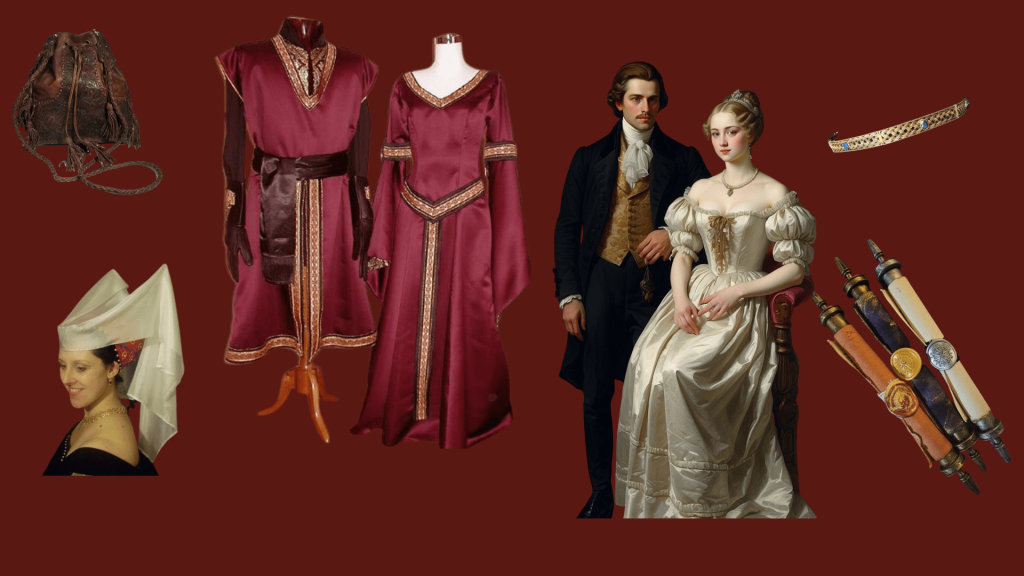
Together they symbolize grace and prestige: she in a velvet gown with a hennin, he in a brocade tunic with a circlet crown.
Fur-trimmed cloaks drape over their shoulders, while shared props, such as a chalice or scroll, accentuate their regal unity.
These examples provide insight into the lifestyle, customs, and daily experiences of medieval nobility during this historical period.
Key Elements of Noble Clothing
These are some key elements that can bring medieval fashion for nobles to look more realistic.
| ELEMENT | DESCRIPTION |
|---|---|
| Fabrics & Materials | Nobles wore luxurious textiles like silk, velvet, brocade, and fur. These costly imports symbolized wealth and global connections. Fur-lined cloaks and gowns, showing exclusivity. |
| Colors & Dyes | Expensive dyes were for the elite. Purple signified royalty, crimson and scarlet symbolized power, and gold reflected divine authority, projecting prestige beyond peasants. |
| Men’s Attire | Noblemen balanced function and display with richly embroidered tunics, surcoats with family crests, dramatic cloaks, and silk or wool hose, symbolizing readiness for politics and war. |
| Women’s Attire | Fashion highlighted magnificence and modesty. Layered gowns and kirtles created flowing shapes, with long sleeves symbolizing wealth. Headdresses, veils, or hennins indicated social rank. |
| Accessories & Jewelry | Crowns, circlets, jeweled belts, and brooches symbolized lineage and legitimacy. Rings, chains, and necklaces indicated alliances, while embroidery patterns reflected noble status. |
Every element of noble clothing was intentional. A way to communicate wealth, command respect, and reinforce the rigid social hierarchy of medieval Europe.
Noble Medieval Clothing And Accessories
Noble clothing in the Middle Ages was a symbol of wealth, power, and refined taste. Rich fabrics, striking colors, and ornate accessories set nobles apart from the rest of society.
1. Elven Style Velvet Renaissance Gown
A luxurious, floor-length gown made of soft velvet with dramatic bell sleeves and gold trim, perfect for recreating the elegance of noblewomen at fairs, weddings, or cosplay events.
- Price: ~$230.62
- Comfort Tip: Fully lined; size up if you plan to layer
- DIY Idea: Add detachable trim or brooches
2. Velvet Renaissance Gown with Detachable Sleeves
A custom-tailored gown crafted from heavy velvet, featuring detachable sleeves for style flexibility. Ideal for noble ladies seeking both comfort and glamour during festivals or reenactments.
- Price: ~$154.99
- Comfort Tip: Detachable sleeves let you adapt to the temperature
- DIY Idea: Replace sleeves with lace for summer wear
3. King Richard Concho Boots
Durable moccasin-style leather boots with side lacing and decorative conchos. Designed to last, these boots provide both noble flair and practical comfort for long events or reenactments.
- Price: ~$390.00
- Comfort Tip: Break in gradually with thick socks
- DIY Idea: Add brass buckles for flair
4. Hennin
The iconic cone-shaped headdress worn by medieval noblewomen was often draped with a flowing veil. It symbolizes prestige and instantly completes a realistic noble ensemble.
- Price: ~$14
- Comfort Tip: Choose padded lining for comfort
- DIY Idea: Add faux pearls or beads to basic bands
5. Circlet Crown
A lightweight wire circlet with faux gemstone accents, worn across the forehead. This headpiece highlights noble beauty while being comfortable enough for all-day wear.
- Price: ~$17.99
- Comfort Tip: Adjustable chain makes the fit secure
- DIY Idea: Wrap with ribbon to match the outfit
From gowns and crowns to brooches and boots, noble clothing was designed to impress. Today, you can capture that same majestic aura with these timeless replicas.
Practical Medieval Peasant Clothing`
Medieval peasant clothing was plain, durable, and built for hard labor and survival, unlike the luxurious garments of nobles. Yet these practical garments reveal much about their role in medieval society.
1. The Farmer’s Wife
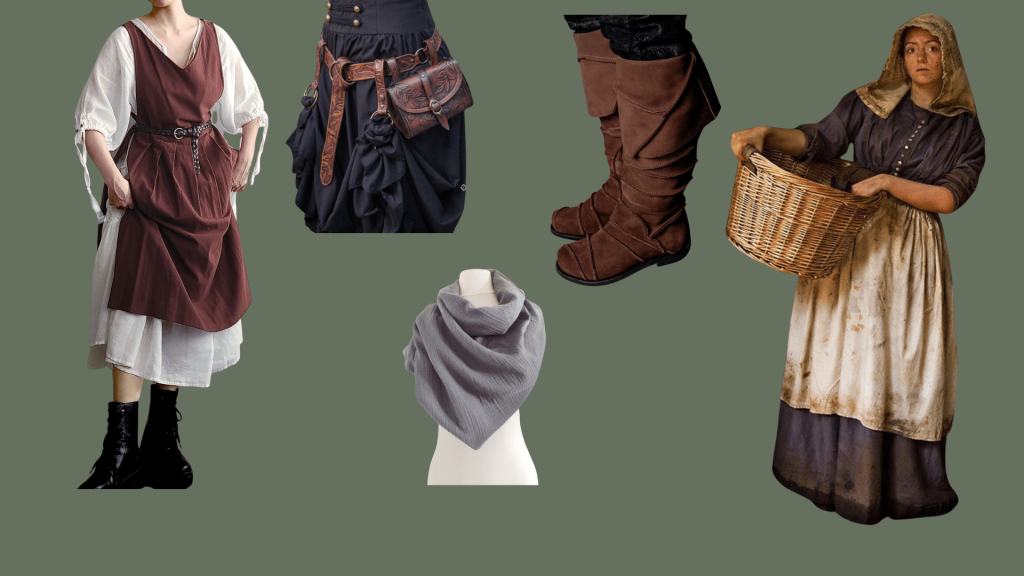
This outfit blends practicality and modesty. A wool tunic in earthy tones layered with an apron and overdress, topped with a linen kerchief.
A rustic belt with a pouch and sturdy flat leather shoes complete her hardworking, realistic look.
2. The Village Laborer
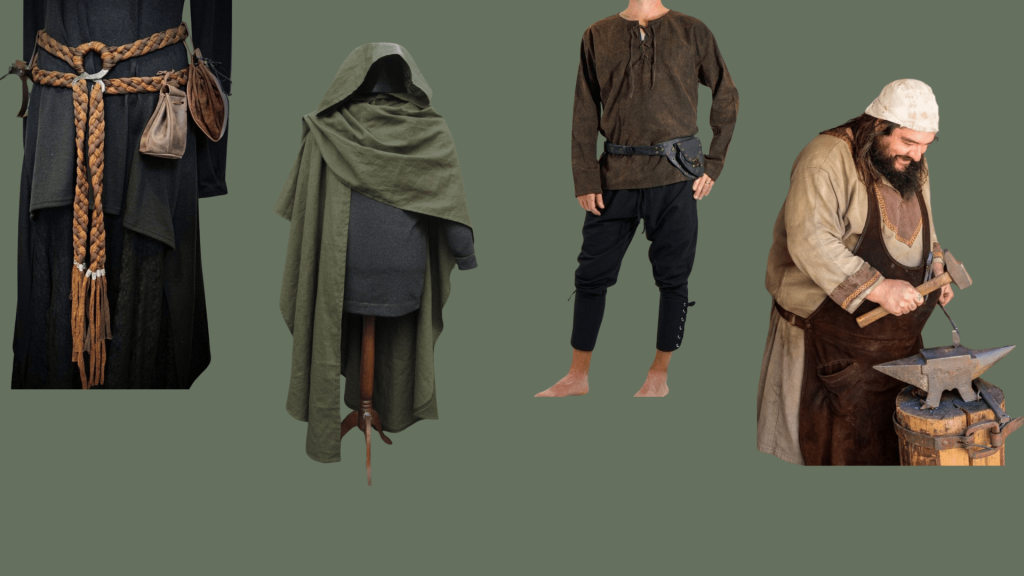
Designed for daily wear, this ensemble features a loose linen shirt paired with simple trousers, wool hose for added warmth, and a rope belt at the waist.
A plain wool cloak, a basic hood, and a sickle prop emphasize his working-class role.
3. The Traveling Peasant Couple
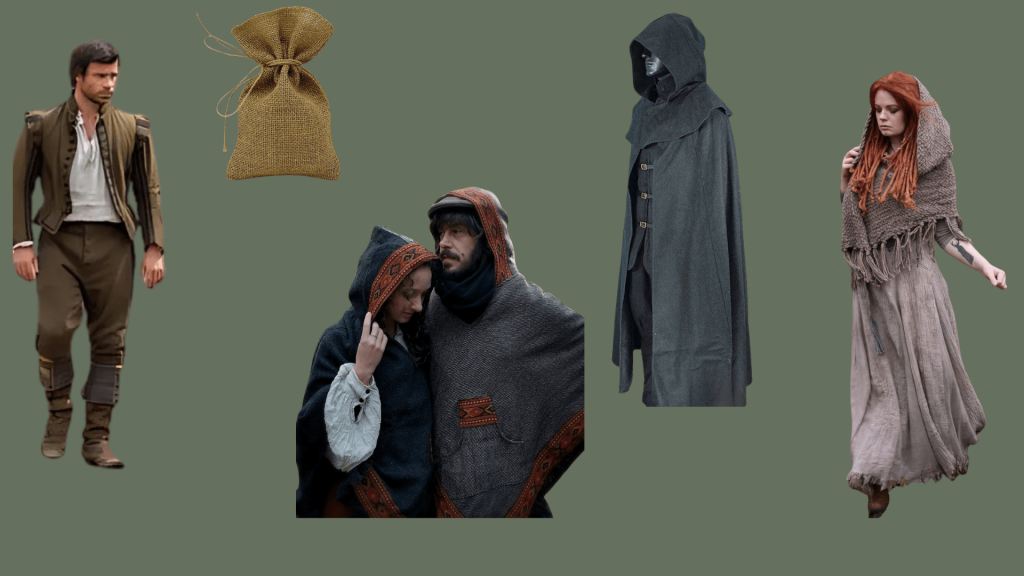
This duo showcases the everyday realism of medieval life. She wears a brown wool tunic with apron and coif, while he dons a grey tunic with cloak and hood.
Both carry practical leather pouches and woven baskets or sacks, highlighting their travelling lifestyle.
These examples offer valuable insight into the daily life, struggles, and living conditions of medieval peasants during this period.
Styling Tips for Medieval-Inspired Outfits
Peasant clothing in the Middle Ages was simple, practical, and affordable, designed for hard work and survival rather than style, reflecting the resilience of the working class.
| ELEMENT | DESCRIPTION |
|---|---|
| Materials | Peasants relied on wool, linen, and hemp for their clothing. fabrics that were durable, affordable, and often produced locally. These choices reflected necessity and self-sufficiency. |
| Colors | Clothing was dyed with inexpensive, plant-based dyes, producing muted earth tones like brown, grey, and dull green. Bright colors were rare and impractical for daily work. |
| Men’s Attire | Simple tunics paired with trousers or leggings, belted at the waist. Cloaks and hoods offered warmth in cold seasons, while footwear was plain or absent. |
| Women’s Attire | Long wool or linen gowns covered by aprons or overdresses for work. Head coverings, such as kerchiefs or coifs, provided modesty and protection. |
| Accessories | Utility came first: leather belts, cloth pouches, or simple bags for tools and coins. Props like baskets, buckets, and sickles reflected their daily labor. |
| Practical Focus | Peasant clothing emphasized durability and affordability, often featuring patches or being reused. Outfits were designed to endure labor-intensive tasks and withstand harsh weather. |
Though plain compared to noble attire, peasant clothing tells a story of endurance and labor. Every tunic, apron, and cloak testifies to medieval strength and dignity in simplicity.
Conclusion
Medieval noble clothing reflects artistry, wealth, and social hierarchy. From luxurious fabrics to intricate details, these garments tell stories of medieval society, contrasting sharply with peasant clothing.
If you’re a history enthusiast, educator, or reenactment participant, understanding medieval fashion helps bring the past to life. Ready to experience medieval nobility firsthand?
Find realistic medieval clothing replicas for your next historical event, costume party, or educational project.
Start your venture into medieval noble fashion today and find how clothing can transport you back to this intriuging period in history.

